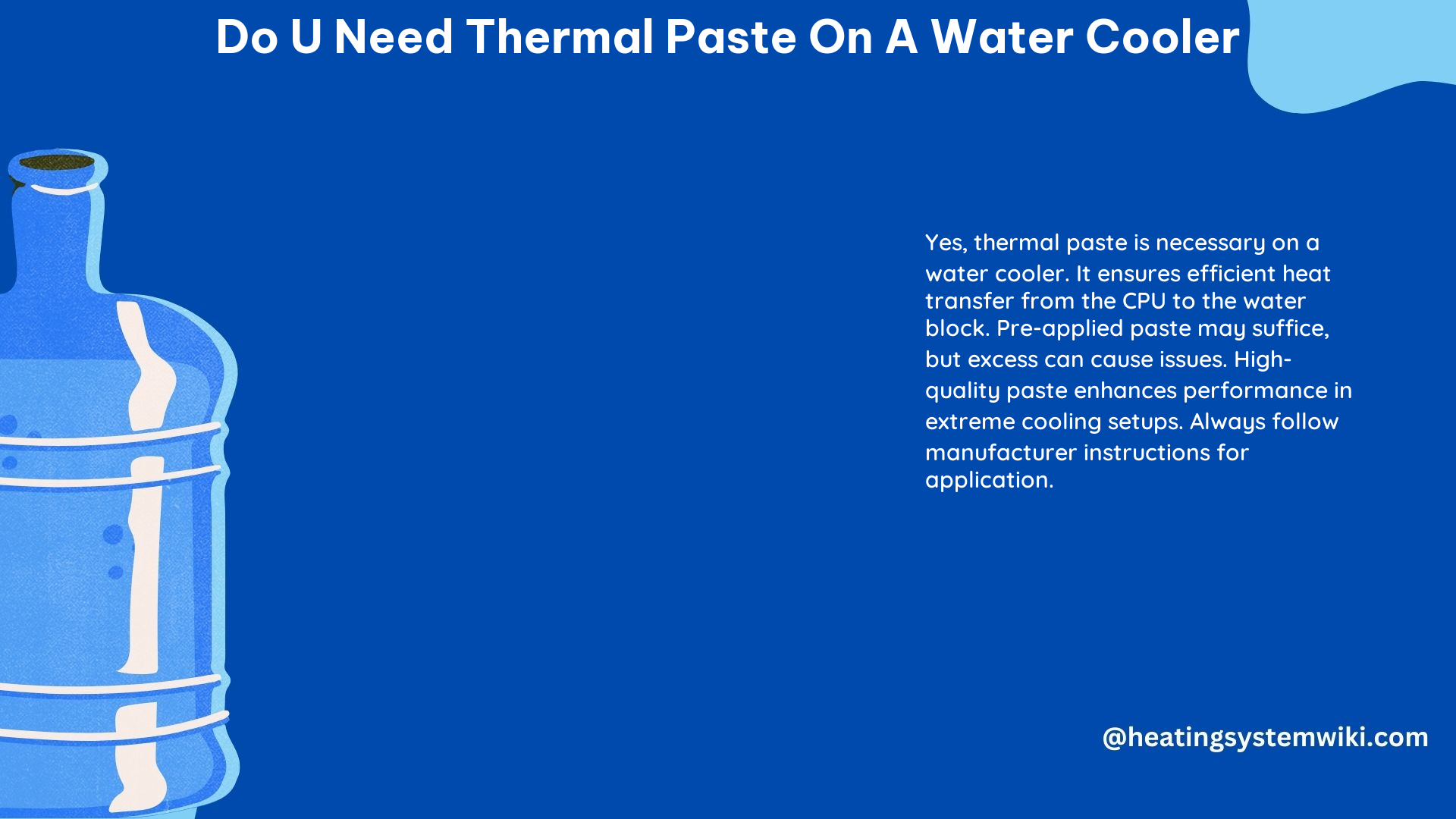When it comes to water cooling systems for CPUs, the use of thermal paste is a crucial consideration. Thermal paste plays a vital role in ensuring efficient heat transfer between the CPU and the water block, which is essential for optimal cooling performance. In this comprehensive guide, we will delve into the importance of thermal paste in water-cooled systems, the factors to consider when selecting the right thermal paste, and the proper application techniques to achieve the best results.
The Role of Thermal Paste in Water Cooling
Thermal paste, also known as thermal interface material (TIM), is a thermally conductive compound that fills the microscopic gaps and irregularities between the CPU and the water block. These gaps can act as insulation, preventing efficient heat transfer from the CPU to the water block, which is the primary function of a water cooling system.
By applying a thin layer of thermal paste between the CPU and the water block, you create a seamless thermal interface, allowing heat to be effectively transferred from the CPU to the cooling liquid circulating through the water block. This process is crucial for maintaining optimal CPU temperatures and ensuring the longevity of your hardware.
Factors to Consider When Choosing Thermal Paste

When selecting thermal paste for a water-cooled system, there are several factors to consider to ensure optimal performance:
-
Thermal Conductivity: The thermal conductivity of the paste is a crucial factor, as it determines how effectively heat can be transferred from the CPU to the water block. Higher thermal conductivity values, typically measured in W/m-K (watts per meter-Kelvin), indicate better heat transfer capabilities.
-
Viscosity: The viscosity of the thermal paste affects its ease of application and ability to fill in the microscopic gaps between the CPU and the water block. A paste with the right viscosity will spread evenly and provide a uniform layer, ensuring optimal contact.
-
Curing Time: Some thermal pastes require a curing or break-in period before they reach their full thermal performance. This is an important consideration, as it may affect the initial cooling performance of your water cooling system.
-
Longevity: The long-term stability and durability of the thermal paste are also important factors. A high-quality paste should maintain its thermal properties and not dry out or degrade over time, ensuring consistent cooling performance throughout the lifespan of your water cooling system.
-
Compatibility: Ensure that the thermal paste you choose is compatible with the materials used in your water cooling components, such as the CPU, water block, and other metal surfaces. Some pastes may not be suitable for certain materials, leading to potential compatibility issues.
Proper Application of Thermal Paste
Applying thermal paste correctly is crucial for achieving the best cooling performance in a water-cooled system. Here’s a step-by-step guide on how to apply thermal paste:
-
Clean the Surfaces: Thoroughly clean the CPU and the water block surfaces using a lint-free cloth and a suitable cleaning solution to remove any dust, debris, or residual thermal paste.
-
Apply the Thermal Paste: Use a small, pea-sized amount of thermal paste and apply it to the center of the CPU’s surface. Spread the paste evenly using a clean, flat object, such as a credit card or a thermal paste spreader, ensuring a thin, uniform layer.
-
Attach the Water Block: Carefully place the water block on top of the CPU, aligning it properly. Apply gentle pressure to the water block to ensure full contact with the CPU surface and the thermal paste.
-
Secure the Water Block: Tighten the water block’s mounting screws or brackets according to the manufacturer’s instructions, ensuring a secure and even attachment.
-
Check for Proper Contact: After assembling the water cooling system, visually inspect the CPU and water block interface to ensure that the thermal paste has spread evenly and there are no air gaps or uneven contact areas.
-
Monitor Temperatures: Once the system is up and running, closely monitor the CPU temperatures to ensure that the water cooling setup is providing the expected cooling performance.
Conclusion
In the world of water-cooled systems, the use of high-quality thermal paste is an essential component for achieving optimal cooling performance. By understanding the role of thermal paste, the factors to consider when selecting it, and the proper application techniques, you can ensure that your water cooling system operates at its full potential, keeping your CPU running at its best.
Remember, investing in a quality thermal paste and following the recommended application methods can make a significant difference in the overall efficiency and longevity of your water-cooled system. With this comprehensive guide, you can confidently tackle the task of ensuring your water cooler is equipped with the right thermal paste for the job.
